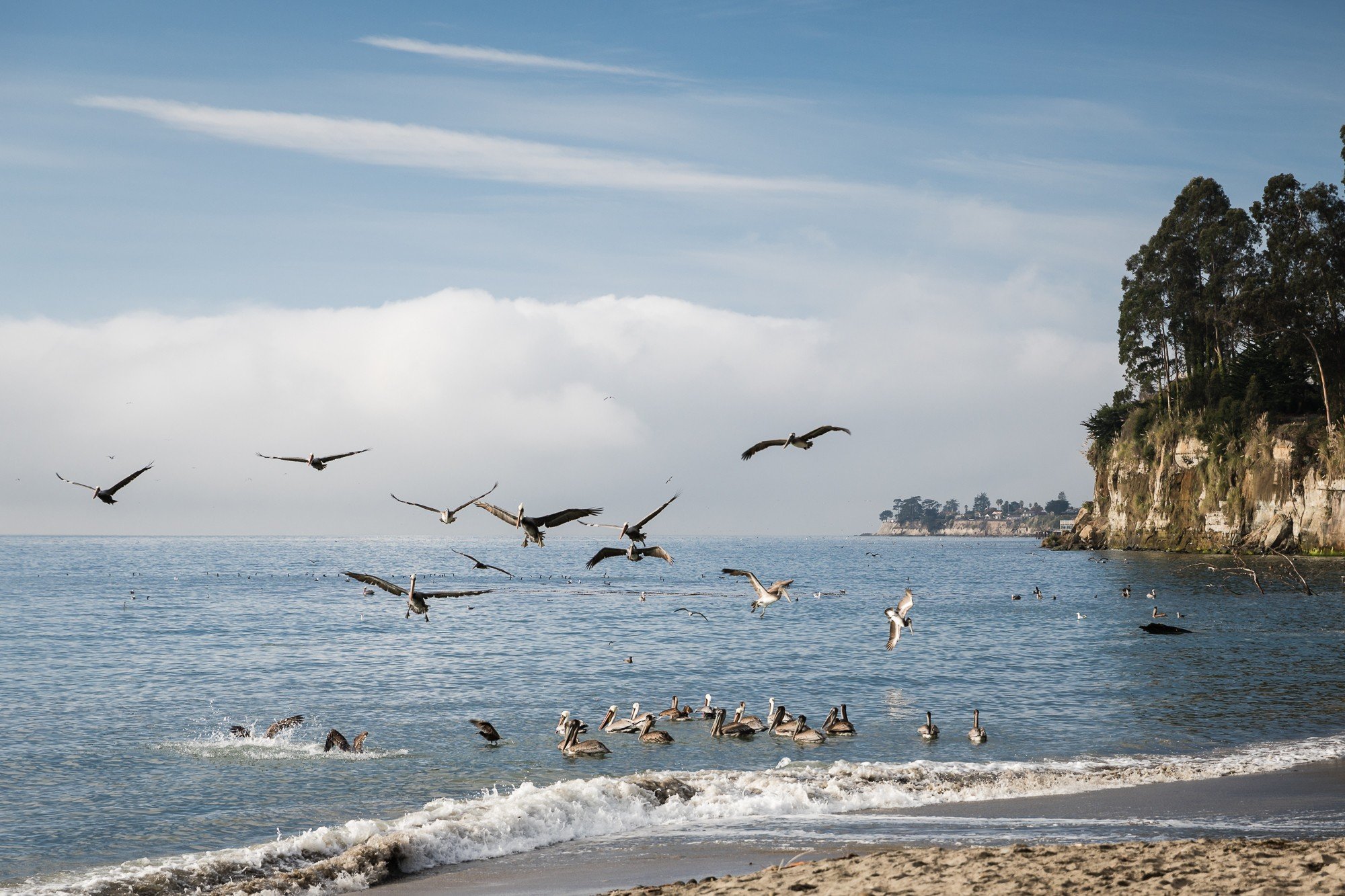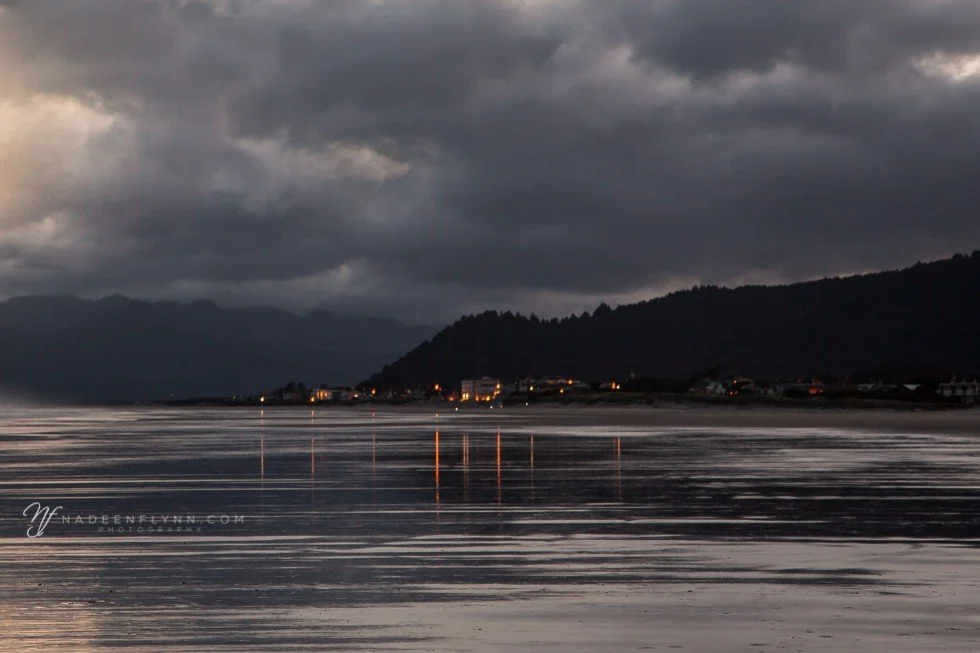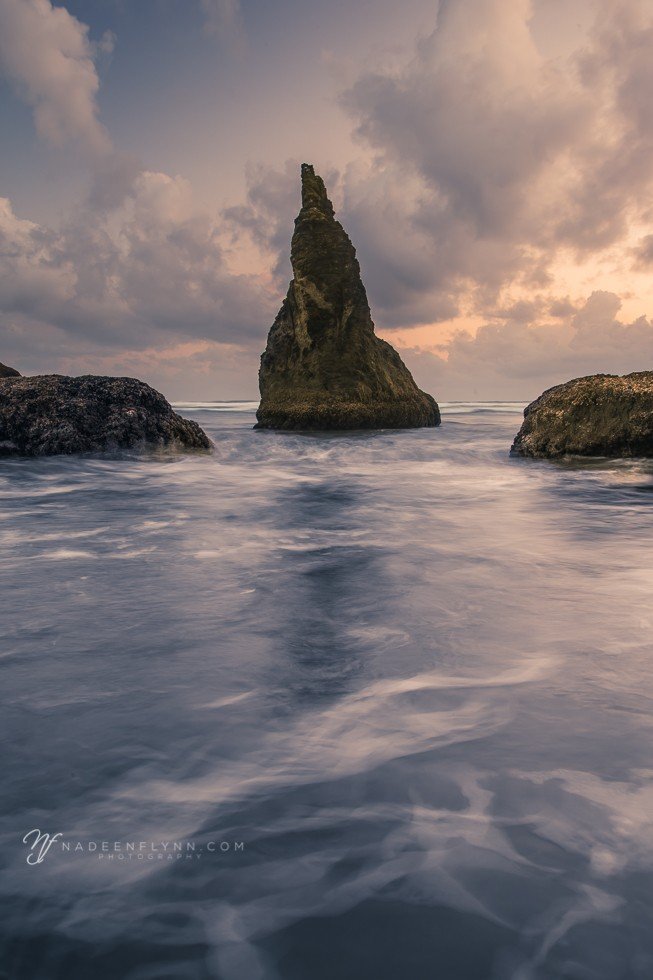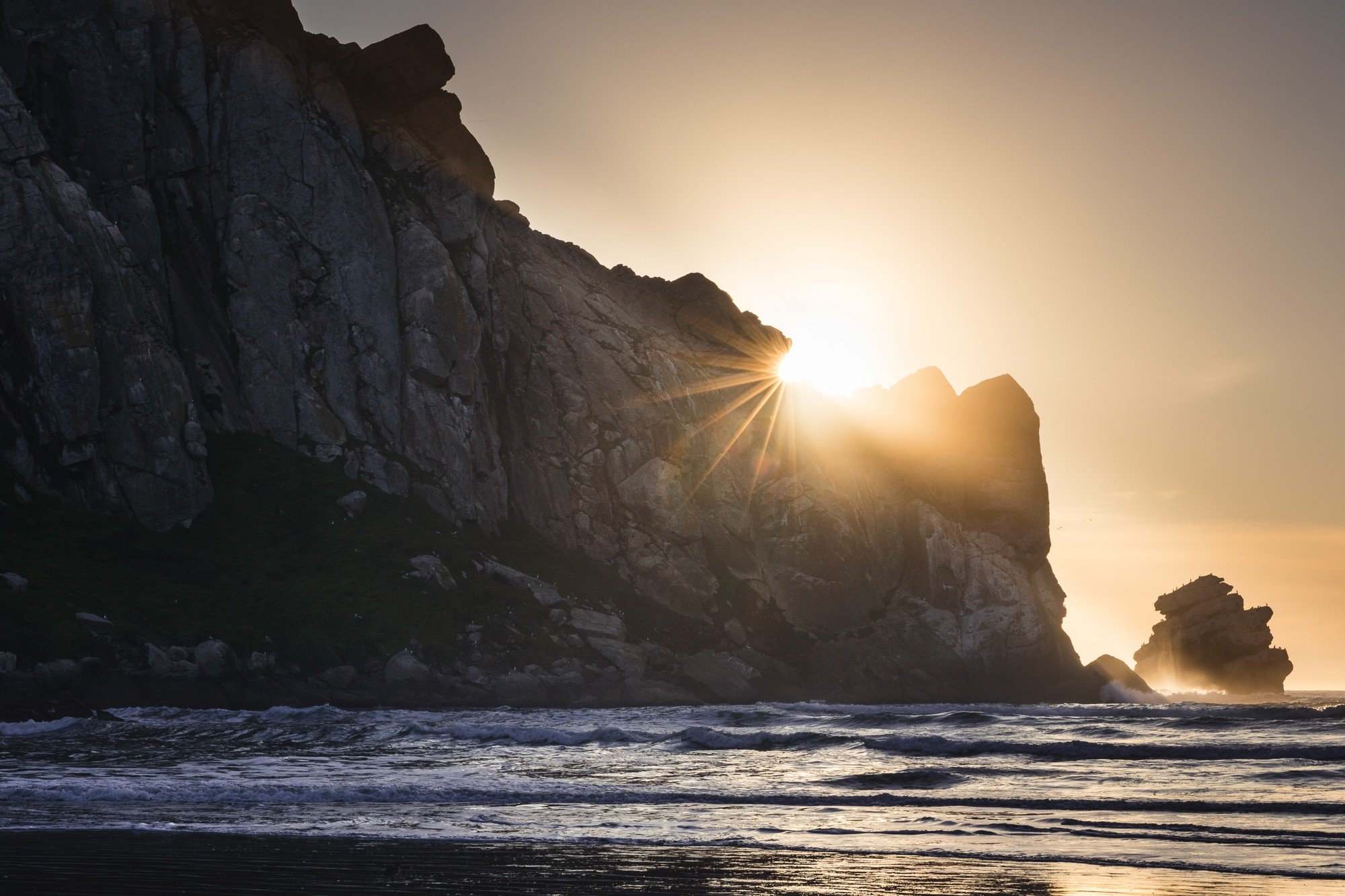Seven Recommendations for Beach Photography | Northern California fine art photography
The beach is one of my favorite landscapes to visit and to photograph. I've been shooting there since I first began learning photography. With summer just around the corner, I thought I’d share a few tips. Here are a few recommendations for things I've learned about photographing at the beach.
Recommendations for Photographing at the Beach
pelicans at the beach
Weather
First, any day is a good day to photograph the beach. It might be cloudy or foggy (which can be dreary) but you can still achieve some very beautiful, perhaps moody pictures. Let the weather guide you in creating images of nature in all it's beauty, whatever that might be. Of course, we always hope for the best natural light conditions, but sometimes we need to take what nature has provided and run with it. If conditions are less than what you'd hoped for, use it as a time to challenge yourself. How can you make the most of the weather?
moody clouds and beach lights before sunrise
Sand
Second, take care with your gear so as not to get sand in it. Although many cameras and lenses are sealed, sand and grit can get into the focus ring or other parts of your gear. Since it is usually breezy at the beach, sand can be in the air. So take care especially when changing lenses during your beach photography adventures. Protect your gear from sand with a plastic bag with a hole cut out for the lens and use the lens cover whenever you are not shooting. Even a rain sleeve can be helpful in protecting your gear from sand. I learned this from experience. Caught in a strong wind with sand flying everywhere, my camera and lens had fine sand in every nook and cranny. I had to send it to the manufacturer for an intense cleaning.
orange burn sunset with sea gulls on rocks
Time of Day
Third, the best times for photographing at the beach are at sunrise (aka funrise) and sunset when the sun is low in the sky creating some incredible yummy golden light. Take advantage of extended time in the winter when the sun stays lower in the sky throughout the day. Mid-day can often be suitable too, especially if there is a bit of cloud cover or fog so that the light is not too harsh which can wash out the color.
long exposure water at the beach
Tripod
Fourth, using a tripod while shooting long exposures is a must. Use a sturdy one because the wind can cause equipment movement resulting in an out of focus image. You might even need to weigh your tripod down a bit. The softening of the waves and clouds requires long exposures to create such beautiful images and capture the movement. But you don't want movement in every area of your image resulting from camera shake. Use a tripod ideally with a remote trigger.
long exposure clouds and water at the beach
Filters
Fifth, filters can be your friend. Graduated filters, high density, or polarizing filters can help you control the light. Know what they do and how to use them. I used to avoid them. Now I use a Breakthrough filter system. What a difference! My favorite go-to filters are the polarizer, 6-stop, and 10-stop. I use these filters ALL THE TIME at the beach. The polarizer will cut down the glare and the 6- and 10-stop filters allow me to achieve a very slow shutter speed.
coastline at Pacific Grove
Best Practices
Sixth, keep all the regular guidelines of photography in mind being mindful of composition, exposure, framing, etc. Research the weather conditions, know the rules or restrictions of the location, and be prepared. Photograph from different angles and perspectives. Use different lenses. Try new techniques with your settings, filters, and lenses. And, have fun.
setting sun behind rock at the beach
Nature First
Seven, know and follow the principles set forth by Nature First. Let's all enjoy nature, but let's also be responsible for caring for nature so that we can all continue to enjoy it. I encourage you to appreciate that nature can be so very fragile. Take good care of her while you're photographing at the beach or anywhere else.
THE NATURE FIRST PRINCIPLES
Prioritize the well-being of nature over photography.
Educate yourself about the places you photograph.
Reflect on the possible impact of your actions.
Use discretion if sharing locations.
Know and follow rules and regulations.
Always follow Leave No Trace principles and strive to leave places better than you found them.
Actively promote and educate others about these principles.
To learn more about Nature First, go to Nature First.
Cloudy, moody sky at the beach with rock stacks
Cloudy, pastel sky at the beach with rock stacks
Photographing cloudy sunset at the beach
Woman walking on the beach at Pismo - ME!
Most importantly ~ ENJOY! AND. JUST. GO. SHOOT.
See more about beach photography in my post When the Weather is Ugly.
Remember to sign up for my newsletter to receive your FREE popular Lightroom Presets AND your FREE mini guide on light!
*****
All images are available for purchase.
* * * * * * *
As a published, featured northern California fine art photographer living in the greater Sacramento area, I specialize in fine art landscape, nature, and still life photography. My style is authentic, fresh and personality-driven. I offer several educational opportunities including workshops and photography mentoring. You can learn about them by going to SERVICES and WORKSHOPS. While currently living in rural northern California with my husband and a couple thousand walnut trees, I post regularly to Instagram.
Please CONTACT ME with any questions or to schedule your learning session.
Serving Yuba City/Marysville, East Nicolaus, Wheatland, Lincoln, Woodland, Davis, Roseville, Rocklin, and the greater Sacramento area.
(530) 633-7575











